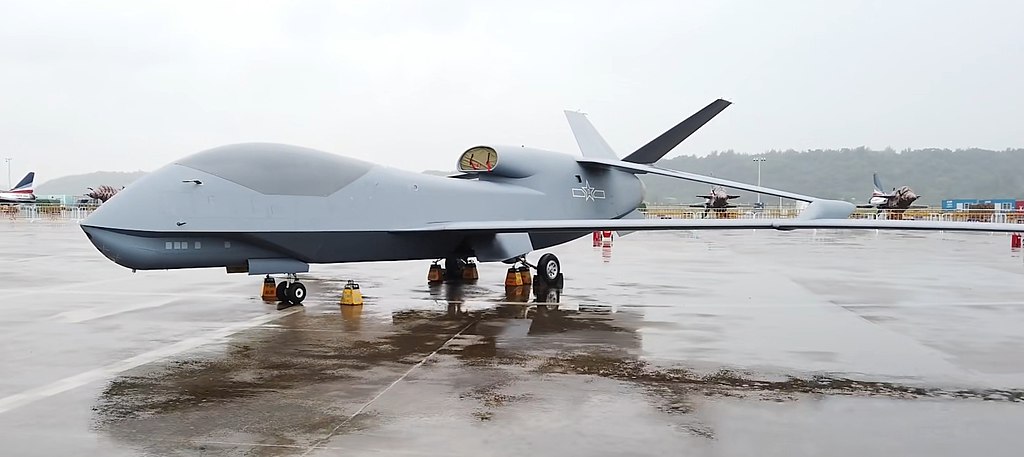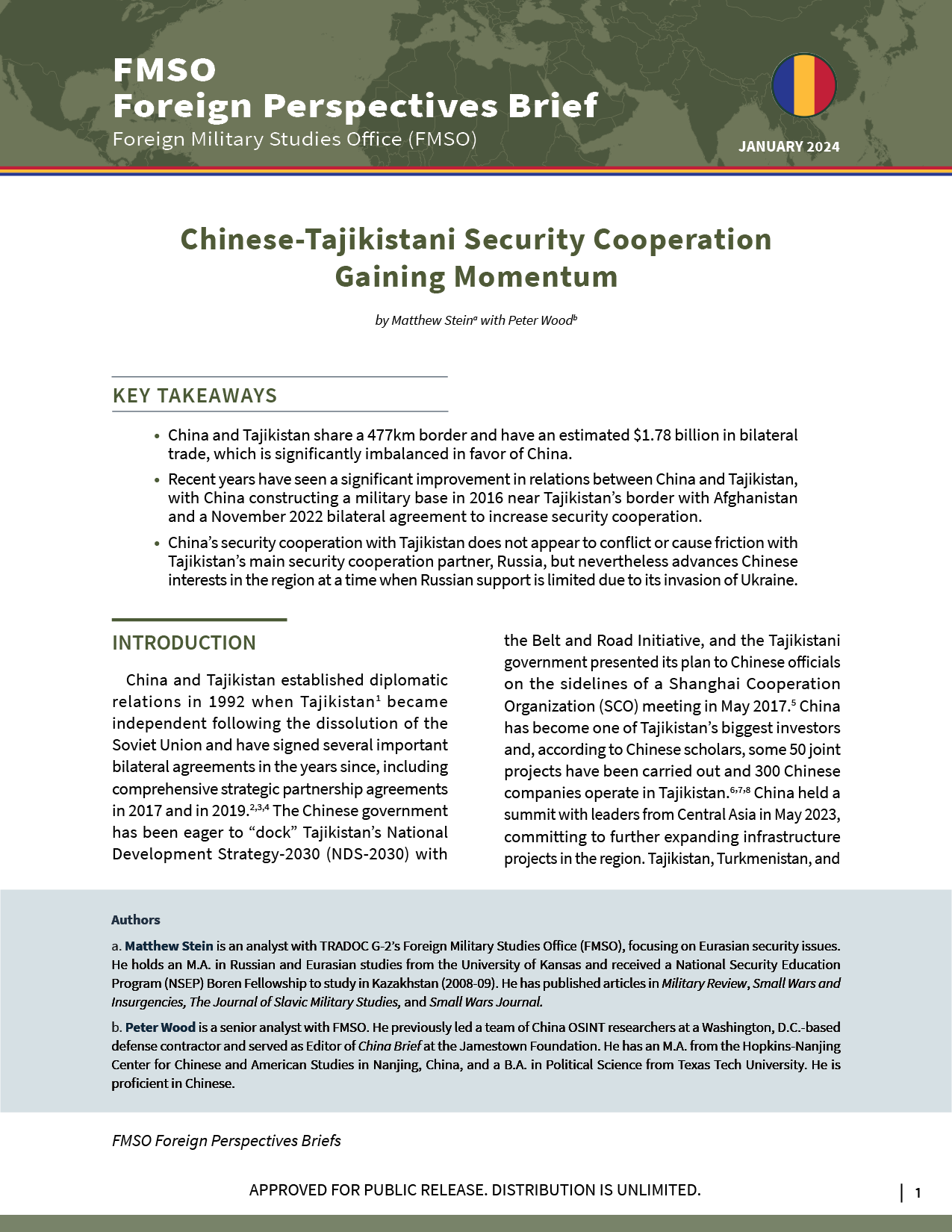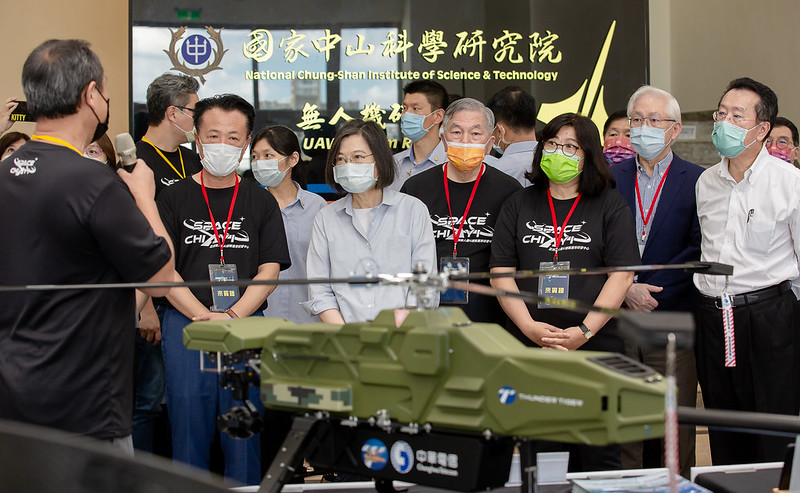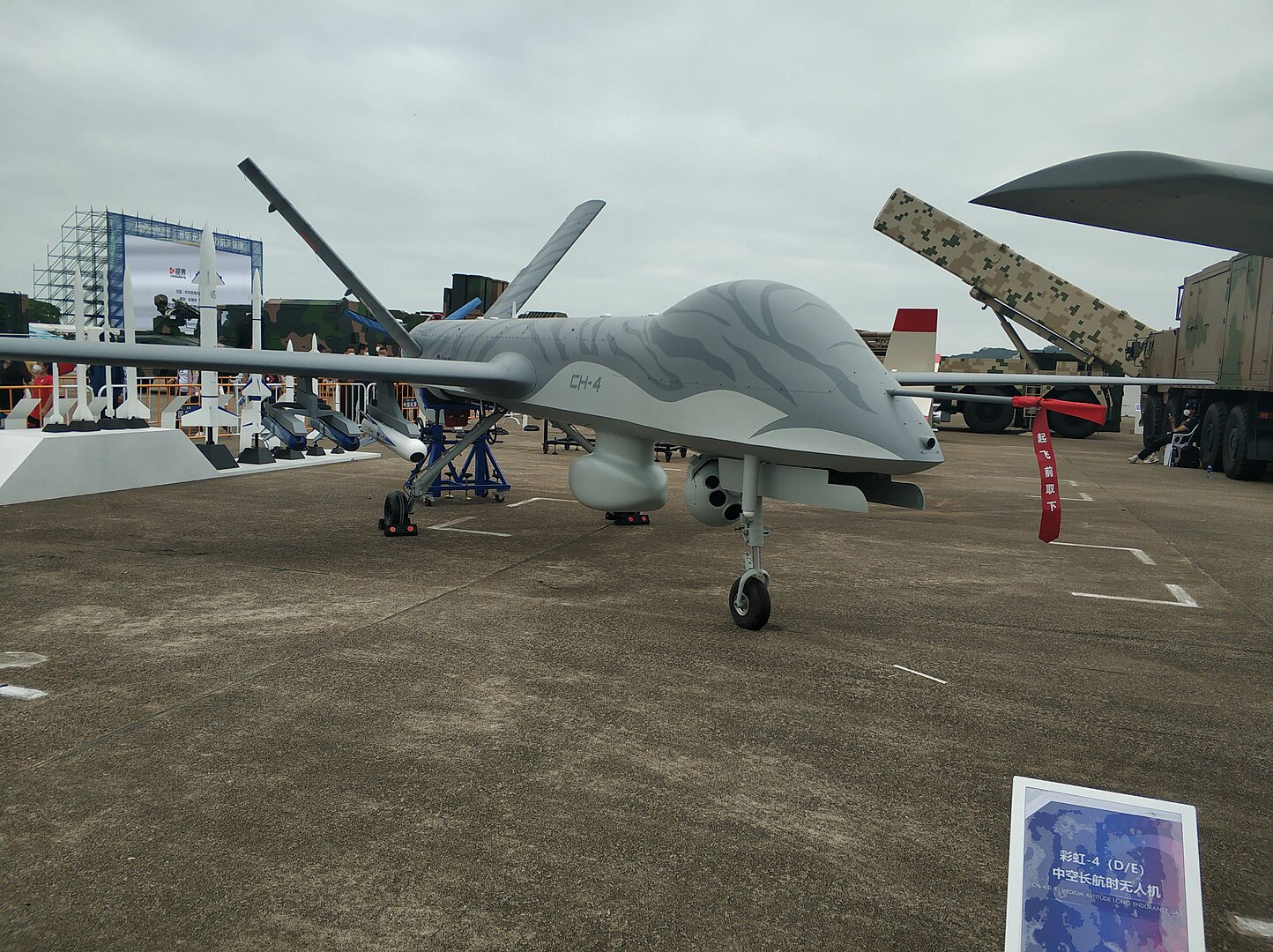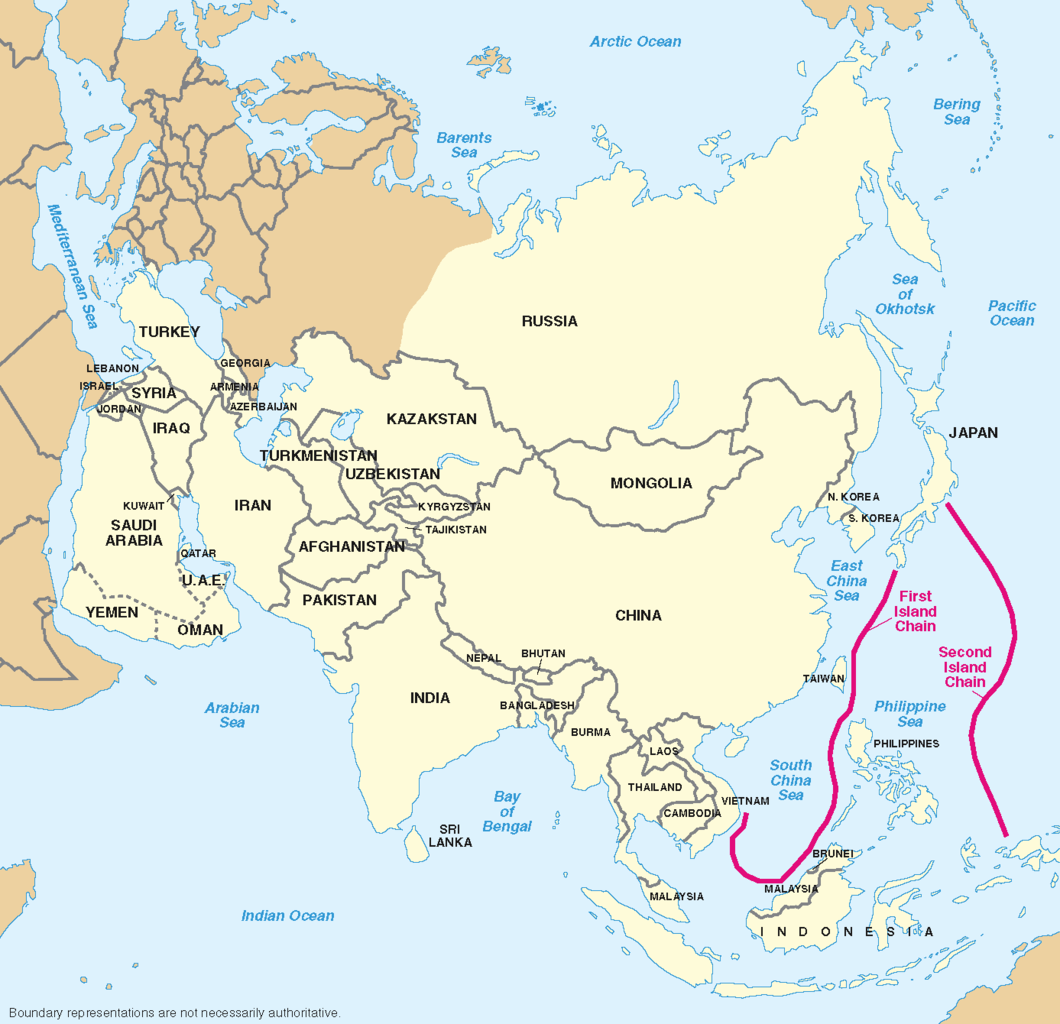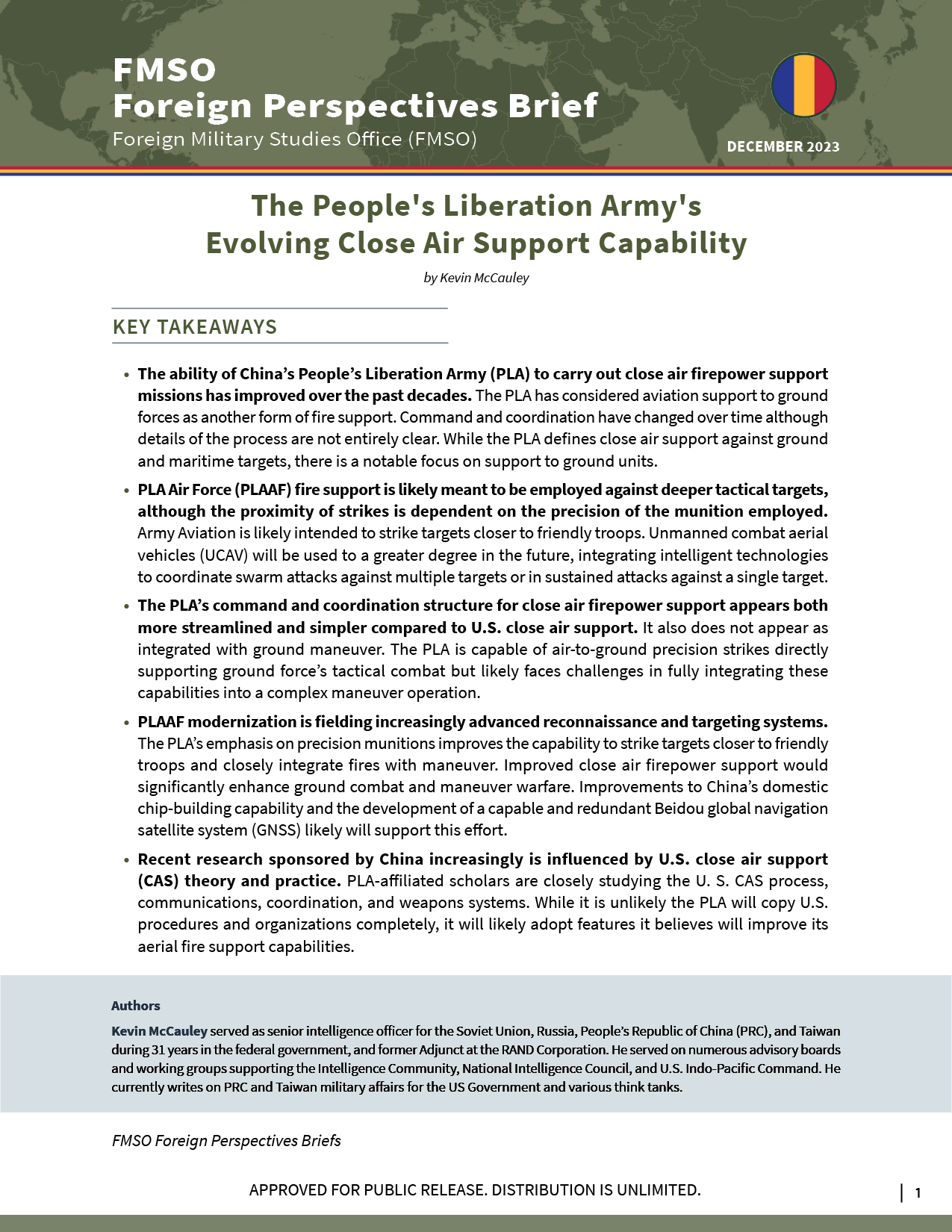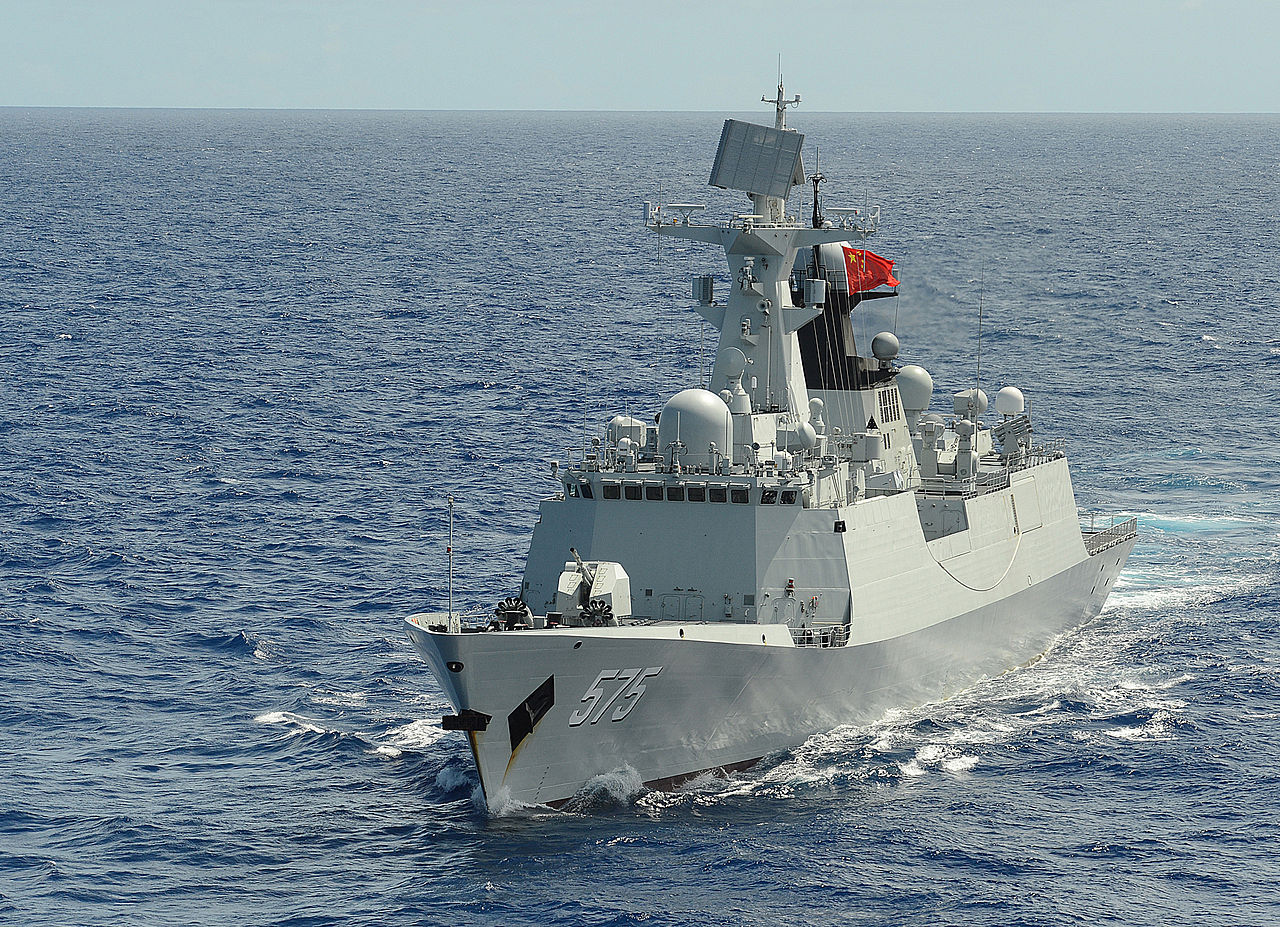
People’s Liberation Army (Navy) frigate PLA(N) Yueyang (FF 575) [R1] steams in formation with 42 other ships and submarines during Rim of the Pacific (RIMPAC) Exercise 2014.
“The Chinese Coast Guard will continue to protect its rights and conduct law enforcement activities in waters under China’s jurisdiction and strongly defend national sovereignty and maritime rights and interests.”
China has multiple maritime disputes with neighboring countries in the South China Sea, but tensions have risen primarily with the Philippines since September. Chinese media, however, has defended and downplayed China’s actions, while placing blame for the increased tensions on the Philippines and its “external” allies, such as the U.S. For example, on 28 September, the Chinese Communist Party (CCP) website, huanqiu.mil, published the excerpted Chinese-language article, which acknowledges rising tensions between China and the Philippines in the South China Sea. The article notes a Chinese Coast Guard ship intercepted a Philippine Naval ship that, according to the article, illegally entered the area around Scarborough Shoal, which the CCP refers to as Huangyan Island.[i] In addition, according to the article, a Philippine diver removed a “floating barrier” placed by China southeast of the shoal. However, the article did not mention that the barrier’s purpose was to prevent Philippine fishermen from fishing in those waters. The Philippines claims the shoal is within its exclusive economic zone (EEZ) while China seeks to access its fishing waters and other natural resources, such as petroleum and gas.
The article claimed the international media reported that regular military exercises the Philippines announced it would hold with the United States, Japan, and other partner navies, were in response to the increased tensions. Yet, the article held the CCP line that rejects any role for countries from outside the South China Sea region in resolving local maritime territorial disputes or defending the claims of adjacent South China Sea countries.[ii] The article further portrayed the People’s Liberation Army Navy’s (PLAN) actions as legal and reasonable and the Philippine Navy’s actions as selfish and based on psychological manipulation or deceit (niēzào shìshí).
Two weeks after the article’s publication, the second excerpted Chinese-language article on the popular social media news website, qq.com suggested that China would only engage in naval conflict with the Philippines if all other options had been exhausted. Further, it claimed any such conflict would only please the United States. Both articles, therefore, portrayed China as defensive and the Philippines or its external allies’ actions as contributing to the rise of tensions. These tensions rose to the fore on 22 October when Chinese and Philippine naval ships clashed.[iii] After the clash, the Chinese media continued to justify the PLAN as being in the right and the Philippines and its backers as the aggressors.
Sources:
“菲律宾宣布将与美日等国举行军演,外媒借机炒作南海紧张局势 (The Philippines announced that with the United States, Japan and other countries it will hold military exercises, foreign media exaggerated tensions in the South China Sea),” Huanqui.Mil.com (Chinese Communist Party online news website presenting pro-government perspectives), 28 September 2023. https://mil.huanqiu.com/article/4EivRbNVa0W
The Philippine navy issued a statement that it would conduct annual military exercises with the United States and other countries south of Luzon in the Philippines. Reports suggested this action came at a time when tensions between the Philippines and China are rising due to disputes in the South China Sea. The Chinese Coast Guard intercepted a Philippine official ship that illegally entered Huangyan Island.
Previously, the Philippine Coast Guard claimed to have dismantled the “floating barrier” placed by China in the southeastern waters of Scarborough Shoal. This action led to a warning from the Chinese government and required the Philippines not to cause provocations and cause trouble.
The Chinese Coast Guard will continue to protect its rights and conduct law enforcement activities in waters under China’s jurisdiction and strongly defend national sovereignty and maritime rights and interests. In addition, China has asserted many times previously that the South China Sea is the common homeland for regional countries and should not become a hunting ground for external powers.
“美国盼着菲律宾与中国开战?中菲不会在南海发生冲突原因有四 (Is the United States looking forward to a war between the Philippines and China? There are four reasons why China and the Philippines will not conflict in the South China Sea.)” QQ.com (Chinese social media platform run by the Tencent technology company), 5 October 2023. https://new.qq.com/rain/a/20231005A07M3600
Will the Philippines conflict with China in the South China Sea? I believe that this is a topic that everyone is very concerned about…. My country’s Coast Guard took restrained and rational measures such as warnings and monitoring, but did not take action to remove the illegal beachside vessel from the Philippines that was stationed on Renai Reef. Therefore, China will not easily use force against the Philippines until the last minute.When the time comes, China will definitely seize the opportunity to teach the Philippines a lesson…. However, judging from the actual situation, it seems that we are not ready for a conflict with the Philippines. Therefore, China’s best choice at the moment is to exercise restraint and calm down and avoid conflict with the Philippines.
Notes:
[i] The Philippines asserts claims to Scarborough Shoal as well as around 50 other features in the Spratly Islands, which are known in the Philippines as the Kalayaan Island Group (KIG). According to a Center for Naval Analyses (CNA) report, the evidence in favor of the Philippine claims compared to the Chinese claims “is hardly a legal ‘slam dunk,’ but the evidence supporting Philippine sovereignty appears stronger. The fact that [Scarborough Shoal] is 400 nautical miles closer to the Philippines than to China and well within the Philippine EEZ weighs in on this determination.” See: Mark E. Rosen, “A CNA Occasional Paper Philippine Claims in the South China Sea: A Legal Analysis,” August 2014. https://www.cna.org/archive/CNA_Files/pdf/iop-2014-u-008435.pdf
[ii] For more on China-Philippine tension in the South China Sea, see: Dodge Billingsley, “China and Philippines Spar Over Grounded Ship In Spratly Islands, OE Watch, 08-2023. https://fmso.tradoc.army.mil/2023/china-and-philippines-spar-over-grounded-ship-in-spratly-islands/
[iii] On 22 October, a Philippines boat sending supplies to forces at the Second Thomas Shoal in the Spratly Islands was disrupted by a Chinese “blocking maneuver,” which the Chinese Coast Guard claimed was a “slight collision” from a Chinese ship into a Philippine boat that was transporting “illegal construction materials” to a Philippine warship. See: Nikkei Asia, “China and Philippines trade accusations over latest clash at sea,” 22 October 2023,https://asia.nikkei.com/Politics/International-relations/South-China-Sea/China-and-Philippines-trade-accusations-over-latest-clash-at-sea. See also ANI News, “Deadly collision caught on cam! China coast guard hits Philippines supply boat in South China Sea,” 24 October 2023. youtube.com/watch?v=EDXzs7To7Xc
Image Information:
Image: People’s Liberation Army (Navy) frigate PLA(N) Yueyang (FF 575) [R1] steams in formation with 42 other ships and submarines during Rim of the Pacific (RIMPAC) Exercise 2014.
Source: U.S. Navy photo by Mass Communication Specialist 1st Class Shannon Renfroe https://commons.wikimedia.org/wiki/File:People%27s_Liberation_Army_(Navy)_frigate_PLA(N)_Yueyang_(FF_575)_steams_in_formation_with_42_other_ships_and_submarines_during_Rim_of_the_Pacific_(RIMPAC)_Exercise_2014.jpg
Attribution: CC x 2.0


